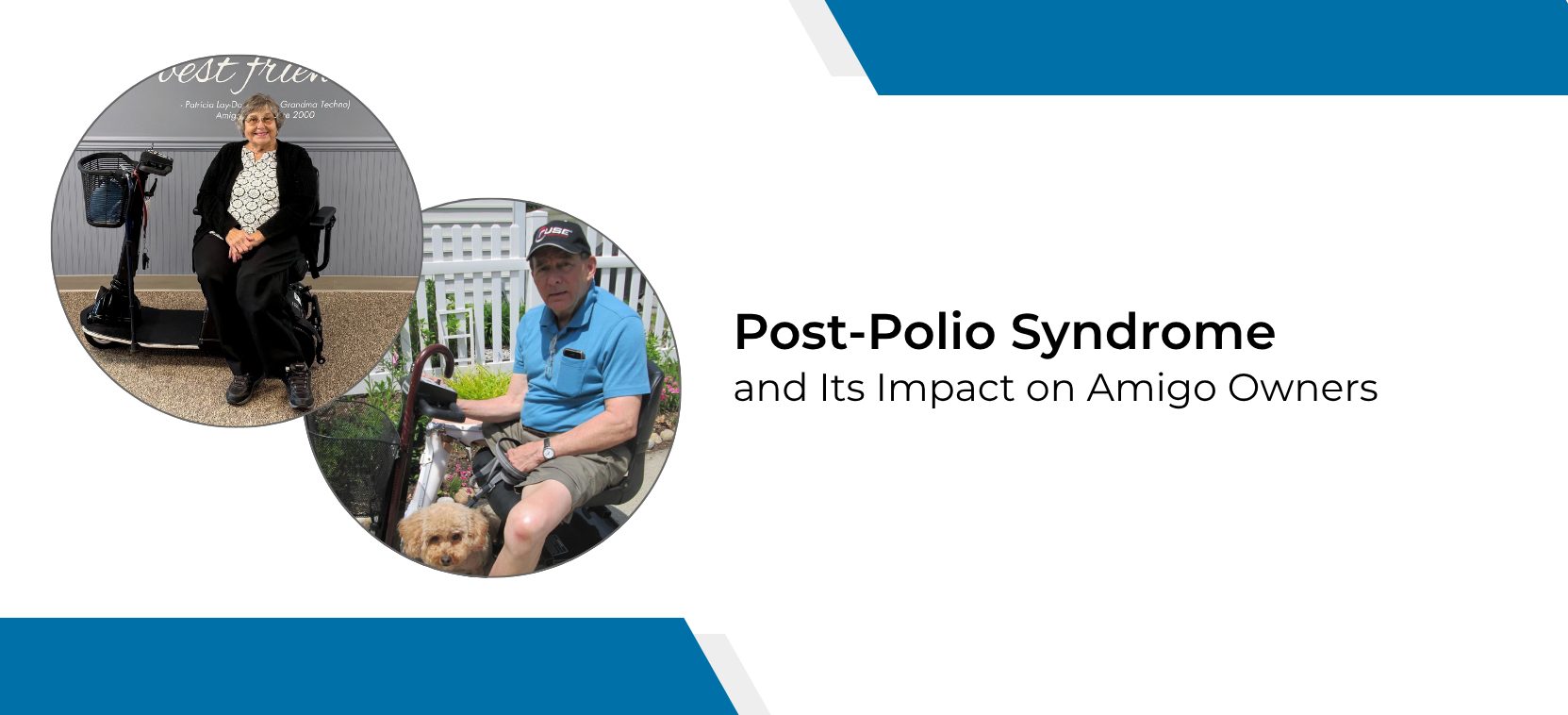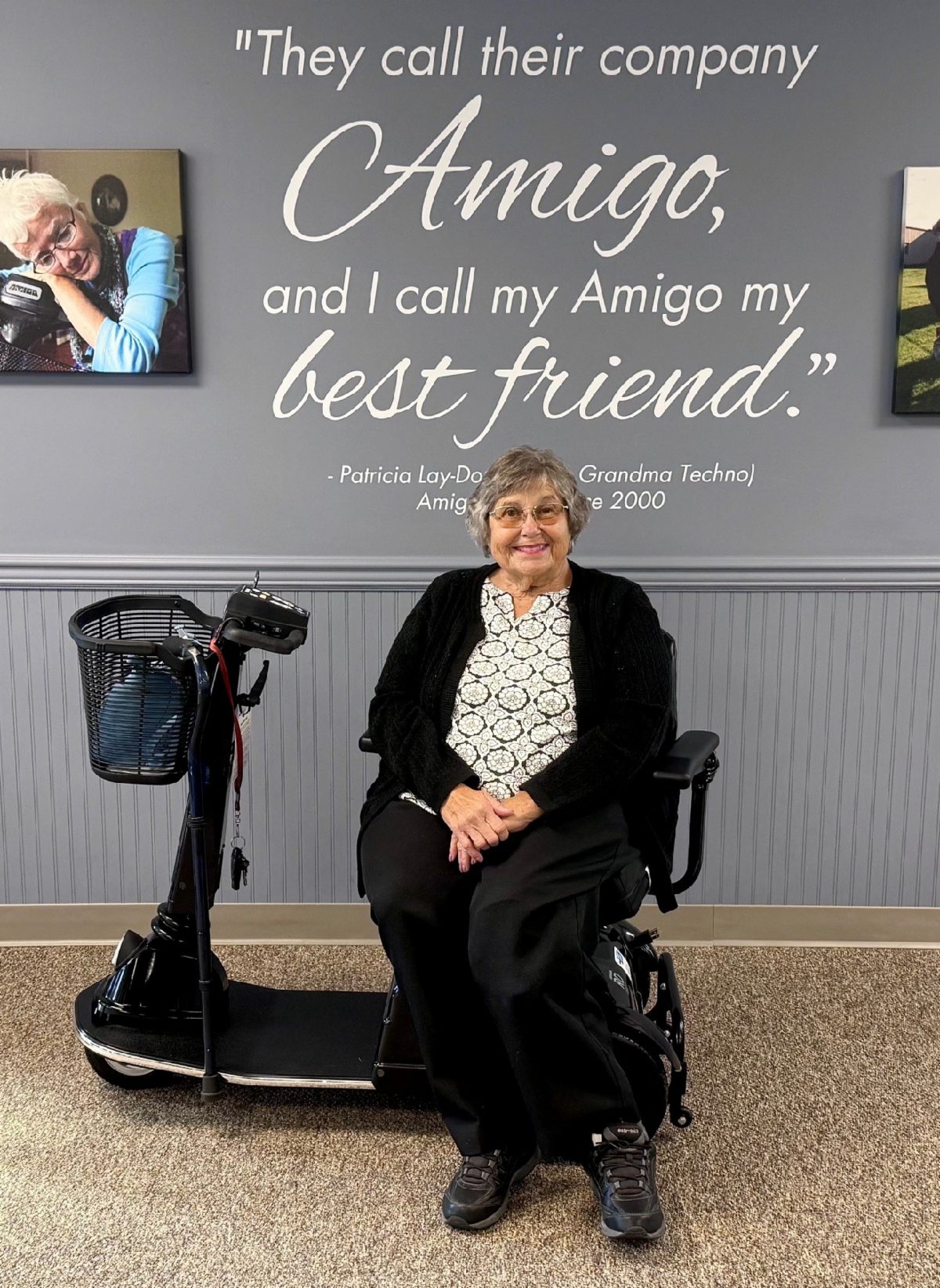Posted on Friday November 7, 2025

Tim Brown
“It was the summer of 1953 when Polio permanently changed my life,” recalled Tim Brown, an Amigo owner since 2013. “I had yet to reach my sixth birthday.”
When Tim was first hospitalized, he was fully paralyzed, but then the paralysis had settled in his right leg. Eventually, he learned to walk again, first wearing a brace and then eventually without.

Associating with friends, going to school, and learning life’s lessons all seemed the same to me as it was to anyone else,” Tim said. “Knowing my limitations, I just found one way or another to do whatever I put my mind to do.”
After graduating from college, Tim began his career in finance, got married, and had two daughters. It was when he was in his 40s that he started experiencing symptoms of post-polio syndrome (PPS), and a little over 10 years ago, Tim got an Amigo to help him travel longer distances.
The most helpful thing for Tim was seeing Dr. Daniel Ryan (a Post-Polio Health International board member) at the Center for Physical Medicine & Rehabilitation Post-Polio Clinic in Warren, Michigan. He said it was there that he met people with similar experiences to his. That led him to participate in the Michigan Polio Network and eventually lead the Southeast Michigan Post-Polio Support Group, which began in the 1980s to share the latest information that was coming out about PPS with other polio survivors.
Tim said the biggest benefit of the group is the camaraderie in associating with people who are experiencing the same hurdles. PPS is very individualistic and affects people differently, which makes connecting with others even more beneficial.
Susan Schulz
Susan Schulz, another longtime Amigo owner, recalled when she had polio at just 5 years old. She had surgery at age 12 to fuse her left ankle, and she had braces and crutches to help with her mobility. By the time she was in high school, she was able to walk without any mobility aids.
Susan went on to college at Michigan State University, where she got her master’s degree, and began working in education soon after she graduated.
Years later, after she got married and had children, PPS began to impact her mobility.

“My left knee was hyperextending a bit more every month and was painful!” Susan said. “I sought help from a physiatrist in Bay City, Michigan. She wrote my initial prescription for an Amigo.”
Susan’s first Amigo RD was custom-painted red, white, and blue, which she absolutely loved. She said it was extremely helpful for her, and with it, she could continue teaching.
“When I developed PPS in the 1990s, I didn’t think I would be able to continue teaching,” Susan said. “The distance to walk to and from the parking lot, as well as maneuvering hallways, offices, and my room, would not have been possible without my Amigo.”
Susan has since retired, and she’s living her life to the fullest.
“My Amigo has been a total blessing to help me keep some independence now that I am in my 70s. I use it in my home, at the store, and to attend social events. I can put it in my side-ramped vehicle and drive myself to appointments,” she said. “My life would be much more limited if I did not have an Amigo.”
Many of our Amigo owners have PPS and share a similar story to Tim and Susan, decades of living full and active lives. At Amigo Mobility, we’re grateful to support them through any mobility challenges.
If you are looking for more information or support for post-polio syndrome, visit post-polio.org.
Post-Polio Syndrome & Exercise
According to the Post-Polio Health International, one of the best forms of exercise for people who have PPS is aquatic physiotherapy, otherwise known as hydrotherapy or aquatic therapy. It provides a supportive, low-impact way to stay active.
How it helps:
- Water buoyancy provides extra support for weakened muscles, so you can do exercises like:
- Range-of-motion
- Strengthening
- Aerobic
- Warm water helps your muscles and joints relax, potentially relieving pain
- Recommended temperature is between 90-92°F, but no less than 85°F
- Supports balance and coordination
- Programs are personalized for your specific needs
Talk to your doctor before you begin an aquatic therapy program. Many YMCA locations offer aquatic therapy; click here to check with your local Y.



































